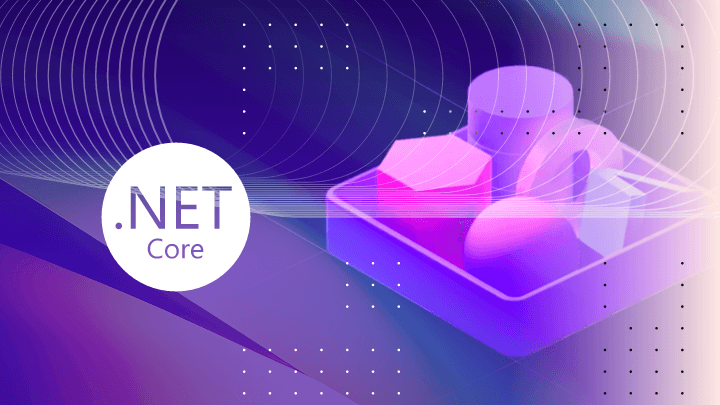As of today, there are more and more ways where people try to optimize their systems, applications, or be it projects.
In some cases, there might already be a software product that has been used for years to operate a particular business, but it requires an update. A common example of this is the need to convert .NET Framework applications to .NET Core. This is done in order to offer this more modern approach and a cross platform option.
In this article we will take a look at some of the benefits, challenges, and a general methodology of how to ensure a smooth transition to .NET Core.
Why upgrade to .NET?
Before we learn how to make the transition into .NET from the older .NET Framework model, we must first consider some of the benefits the newer software platform has to offer.
There is a point in the upgrade and it’s not just that it’s new.
Cross-platform development
When the .NET Framework was being created, it was intended to work only with Windows as back then that was more than enough to make functioning software.
Nowadays, however, despite Windows’ popularity and flexibility, it isn’t the only platform out there. And there are many cases in which our software has to be compatible and communicate with other platforms. This includes Windows of course, but Linux and macOS as well.
This cross-platform integration significantly expands the deployment options and the eventual market reach for any software.
Performance improvements
As we mentioned, .NET Framework is an older approach and that means its performance might also be lacking in comparison to newer development platforms.
.NET Core, for example, was made with a very clear focus on performance. Applications developed on .NET are usually known to have better startup times and lower memory usage which together lead to much better overall performance compared to the older version.
Modern development capabilities
In respect to development practices and technologies, the world has significantly moved on much further than it was anticipated when .NET Framework was being developed. .NET Core embraces many of the modern development practices and technologies.
Such technologies include:
- Microservices;
- Cloud-native development;
- Docker containers.
The newer approach also includes access to the latest language features in C# and F#.
Active community and support
Although .NET Framework applications were a novelty in their time, now they are unfortunately not that supported by the community and are becoming much harder to find any help or expertise on.
.NET Core, on the other hand, is continuously backed by Microsoft and is growing a more and more active community with regular updates and a huge hoard of resources and information. This is one of the key factors that make .NET the more strategic choice in the long term.
Unified development model
Another important aspect of the .NET platform is that it unifies the development model for many different areas.
These areas include:
- Web;
- Desktop;
- Mobile;
- Cloud;
- IoT application, etc.
This unification enormously simplifies the development process and reduces the difficulty of learning the platform for every developer.
Preparing for the upgrade
Now that we have taken a look at why it is best to transition into .NET, we must consider the fact that it is not an easy move, although a beneficial one. Such a move requires some preparation that we have to mention before we talk about the transition itself.
There are three important steps that must be taken.
Assessing the application
In cases where you already have an application running on .NET Framework, an assessment has to be conducted. The current application has to be reviewed in order to determine a number of the key aspects.
The first aspect in question is its inventory dependencies. These include all third-party libraries, NuGet packages, and other frameworks that might be in play. All of these must be compatible with .NET or have some such equivalent.
Another part of the assessment is a thorough code analysis. We can identify areas that require modification by analyzing the codebase of the project. There are a number of tools that can assist in such an analysis.
The last part of the assessment is the creation of a testing plan to verify that the application works properly following the upgrade. This should encompass unit testing, integration testing, and performance testing.
Choosing the right .NET version
Since .NET is a newer platform and has the constant support of Microsoft and a very active community, it is normal for the model to have different versions that are being released and available.
Some versions called Long-Term Support (LTS) offer up to three years of support. It is important to select the ideal version for the purposes of your project in order to make sure you end up with a platform that allows for stability and growth.
Evaluating the upgrade path
There are two main types of carrying out an upgrade. The first is the Direct upgrade. This form is used for simpler applications where you can just migrate the project to the new .NET environment and resolve any sort of compatibility issues that might arise.
The second form is an Incremental upgrade which comes into use with larger applications. This is utilized when parts of the application have to be migrated and tested separately or progressively. This process drastically reduces the risk of critical bugs in the software.
Now that we have explored the necessary preparations before the transition into .NET we can take a look at the process itself.
The upgrade process
There are a number of absolutely necessary steps that have to be undertaken in order to successfully complete the transition process into .NET Core.
Convert project files
There are two different project file types, where one is the .csproj and the other the SDK-style format. The latter being the newer one, respectively.
The transition into .NET begins with the conversion between these file formats. The SDK format is much more intuitive and simpler to use. There are, of course, tools like the CLI that can help with the conversion.
Resolve dependencies
Upon completing the conversion, there might arise issues with incompatible NuGet packages or APIs that have been changed. The problems can be easily fixed by replacing or updating these dependencies with .NET-compatible versions.
In the case of deprecated APIs, alternatives have to be identified or the code refactored in order to align with the new standards of .NET.
Code refactoring
As we mentioned, some segments of the codebase may rely heavily on Windows-specific APIs or behaviors that are simply not available or recommended for .NET.
By refactoring these portions the cross-platform APIs can be used instead. More modern development patterns like asynchronous programming are usually used in such cases.
Testing
One of the most important aspects of the transition into .NET is the testing of your application after the implemented code changes.
A brilliant way of ensuring no regressions or bugs in the code are automated tests.
Deployment
The final part of the transition is the deployment. The upgraded application has to be deployed in a staging environment that closely replicates your production setup to identify any environment-specific issues.
After successful testing in the staging environment, we can proceed with planning the production deployment, ensuring you have a rollback strategy in place to address any unexpected problems.
Post-upgrade considerations
Even after a successful Testing and Deployment phases, the application still has to be monitored in order to ensure full functionality and limit the risk for any detrimental bugs. Various tools like Application Insights or a number of Application Performance Management (APM) solutions can be utilized as well.
As was said before, .NET keeps evolving and changing thanks to its growing community. You can very well take advantage of new features and capabilities in .NET to enhance the application even further. This might include integrating with cloud services, improving security, or optimizing performance.
Migrating from .NET Framework to .NET is a forward-thinking decision that can secure your applications for the future while unlocking new functionalities. Though the transition may appear challenging, proper planning and execution can result in substantial long-term advantages.
By adhering to the recommendations in this article, you can ensure a seamless migration and set your application up for success in today’s evolving development environment. Regardless of whether you’re handling a small project or a large-scale enterprise solution, now is the time to make the switch. Embrace the power of .NET and benefit from its modern, efficient, and flexible platform.














